When it comes to crafting a garden that not only flourishes but also captivates, the magic often lies in the perfect pairing of flowers. For both the novice gardener and the seasoned horticulturist, understanding how to combine blooms can transform any outdoor space into a vibrant canvas of color and texture. By learning the art of pairing, you’ll not only enhance the aesthetic appeal of your garden but also create a harmonious environment that supports plant health and attracts beneficial pollinators.
Imagine stepping into your garden and being greeted by a symphony of hues, each flower complementing the next in a delightful dance of color. In this article, we’ll explore stunning flower combinations that will inspire you to experiment and personalize your garden with confidence. You’ll discover how to select flowers that thrive together, learn about their complementary growth habits, and find inspiration for every season.
Whether you’re planning a new garden or revitalizing an existing one, these combinations will serve as a roadmap to achieving breathtaking results. We’ll dive into practical tips on pairing perennials with annuals, mixing heights and textures, and even incorporating native species for sustainable beauty. With this guide, you’ll gain valuable insights that will empower you to turn your garden vision into a stunning reality, one perfect pairing at a time.
Vibrant Color Pairings to Try
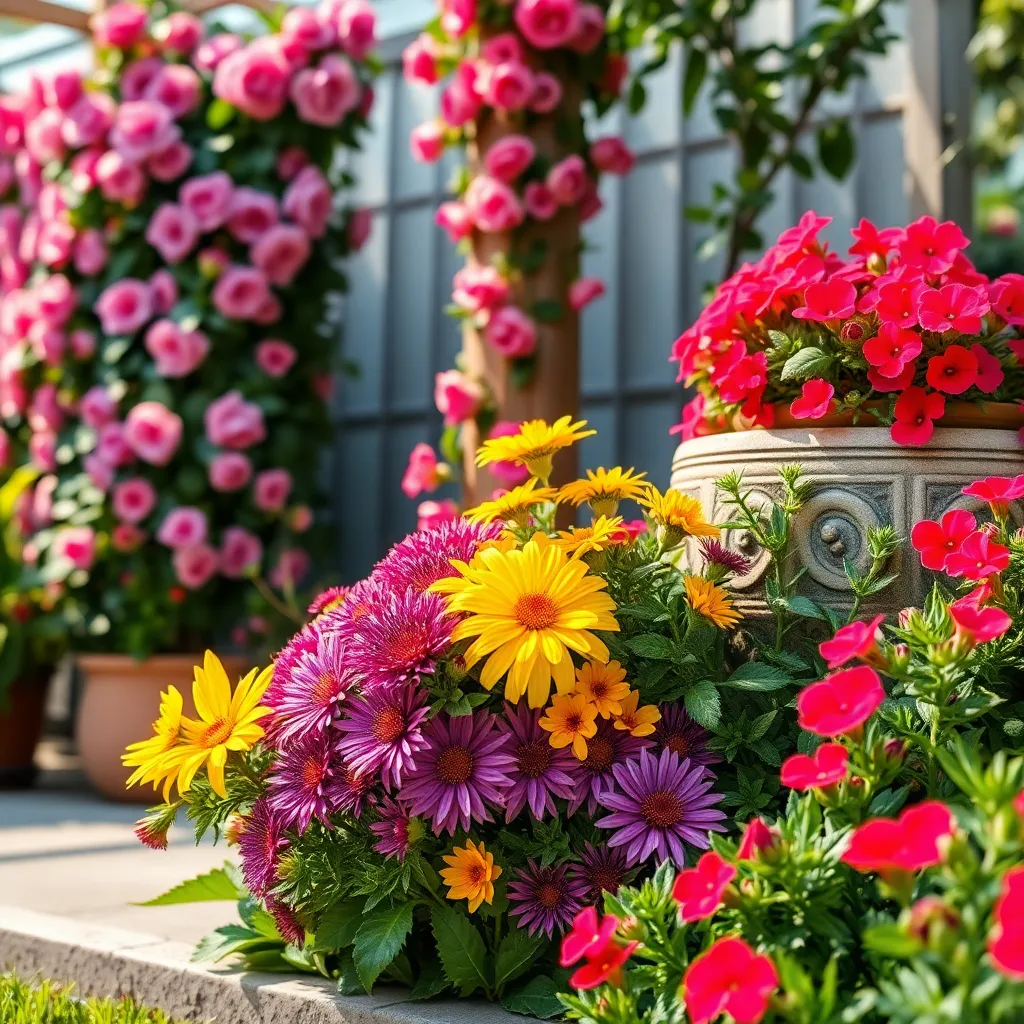
Creating vibrant color pairings in your garden can transform your outdoor space into a visual masterpiece. Start with a classic combination of purple and yellow, such as pairing purple irises with yellow coreopsis, which thrives in well-drained soil and full sun.
To maintain the health and vibrancy of these plants, water them deeply once a week during dry periods. Applying a layer of mulch around the base will help retain moisture and suppress weeds, ensuring your color pairings stay lush and beautiful.
For a more dramatic look, consider mixing red and white flowers like red salvias and white petunias. Salvias are drought-tolerant and prefer full sun, while petunias need regular deadheading to promote continuous blooming.
Advanced gardeners might experiment with complementary colors by planting blue delphiniums alongside orange marigolds. This stunning contrast requires attention to soil pH; delphiniums prefer a slightly alkaline soil, so test your soil and amend it with lime if necessary for optimal growth.
Height and Texture Harmony
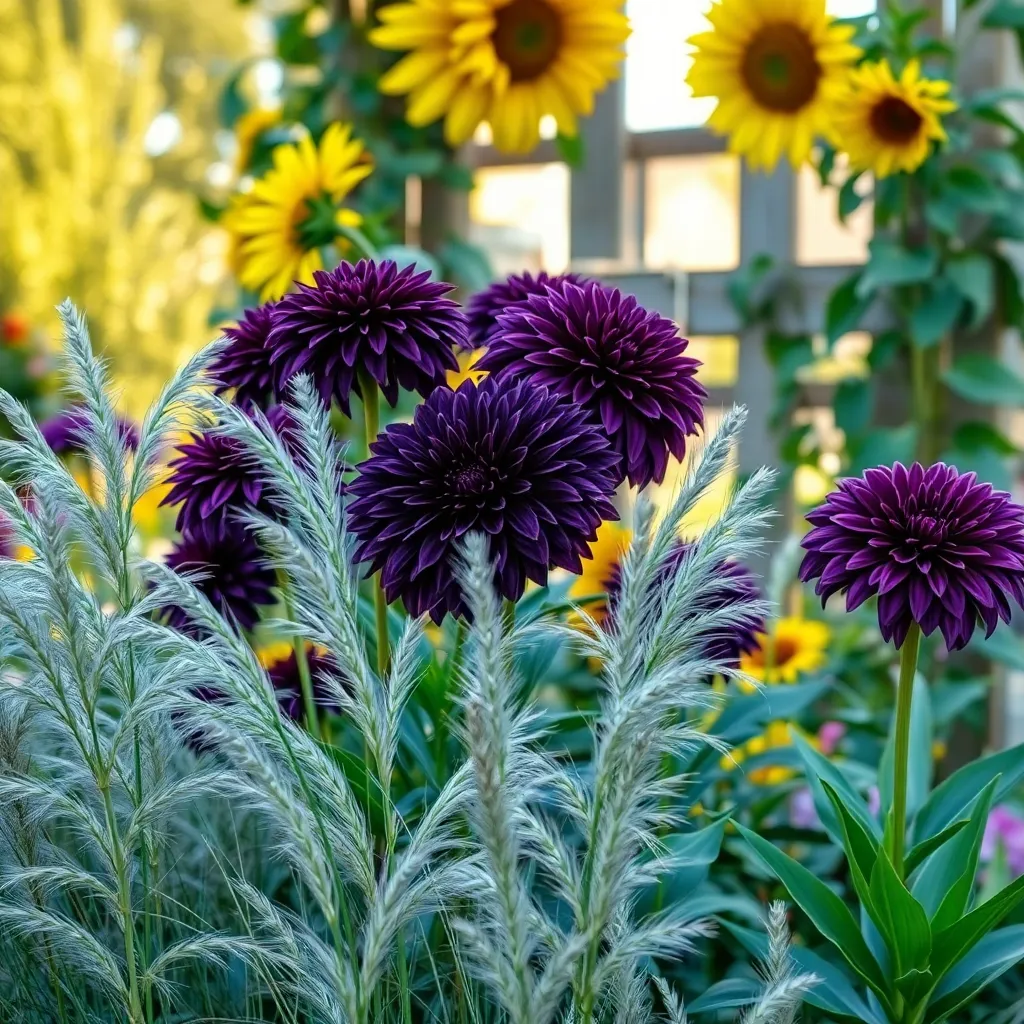
Creating a harmonious balance of height and texture in your garden can transform it into a visually stunning space. Start by combining tall, airy plants like delphiniums with bushy, low-growing varieties such as lavender to create a layered effect.
Choose plants with contrasting textures to add depth and interest to your garden design. For example, pair the feathery foliage of astilbe with the broad leaves of hostas to achieve a striking visual contrast that captivates the eye.
To ensure your garden thrives, provide each plant with the appropriate growing conditions. Delphiniums prefer rich, well-drained soil and full sun, whereas hostas thrive in partial shade and moist, fertile soil.
For beginners, an easy way to maintain height and texture harmony is by planting in groups of odd numbers, such as threes or fives. This technique not only enhances visual appeal but also makes it easier to manage the space as the plants grow.
Seasonal Blooms for Year-Round Beauty
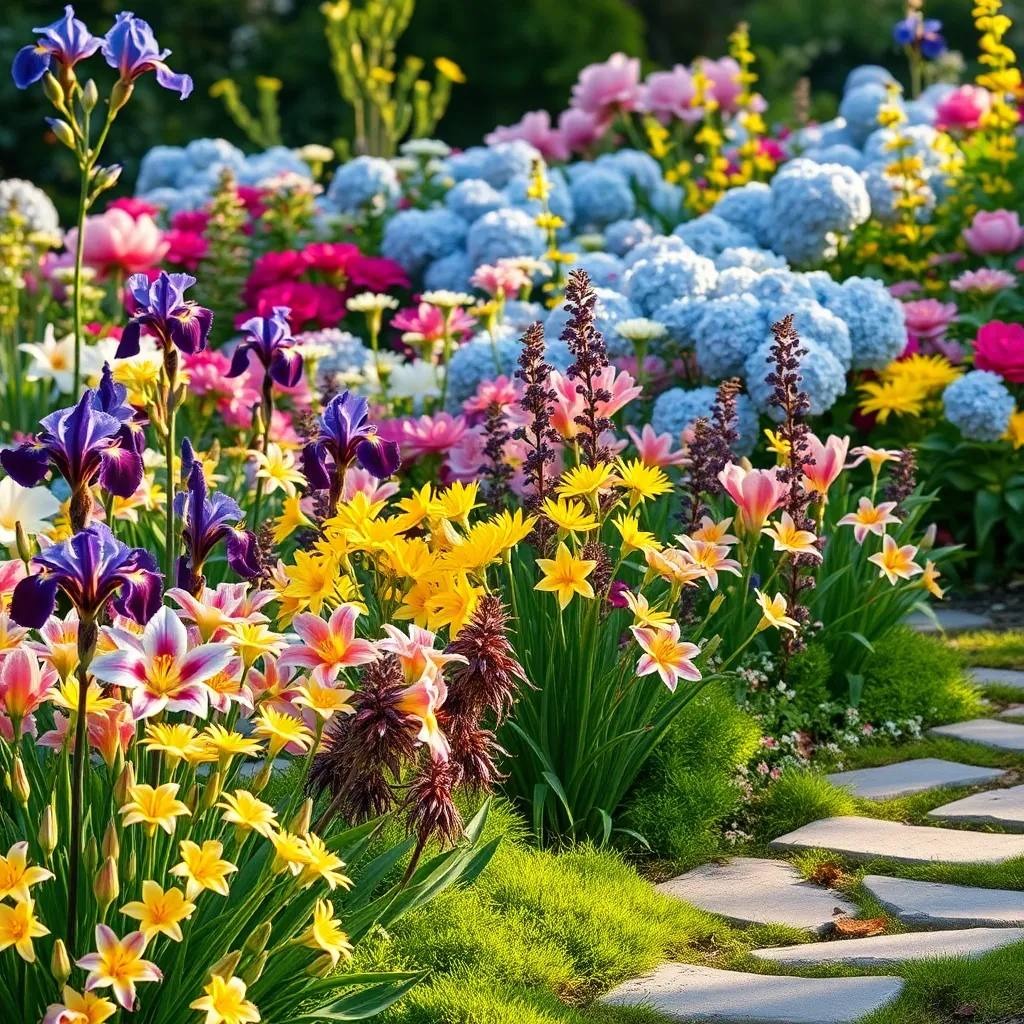
To create a garden that blooms throughout the year, focus on selecting plants that provide seasonal interest. Choose a mix of annuals, perennials, and shrubs that will thrive in your specific climate zone to ensure continuous color and texture.
For spring, consider planting tulips and daffodils that offer vibrant hues after the dull winter months. These bulbs prefer well-draining soil and should be planted in the fall, allowing them to establish before the spring thaw.
As summer arrives, incorporate sun-loving plants like coneflowers and daylilies into your garden beds. These resilient perennials can tolerate heat and drought, but benefit from occasional deep watering to promote robust blooms.
Autumn doesn’t have to mean the end of your garden’s beauty. Chrysanthemums and asters are ideal choices for fall, providing a rich tapestry of colors. Ensure they receive full sun and moderately moist soil to encourage a long flowering period.
Winter gardens can be enlivened with evergreens such as holly or winterberry, which add structure and color. Mulching around the base helps protect roots from freezing temperatures and keeps the soil moist.
For an advanced touch, consider implementing a succession planting strategy to maximize bloom times. This method involves replacing spent plants with new ones to maintain continuous interest, requiring careful planning and regular maintenance.
Fragrance Combinations for Sensory Delight
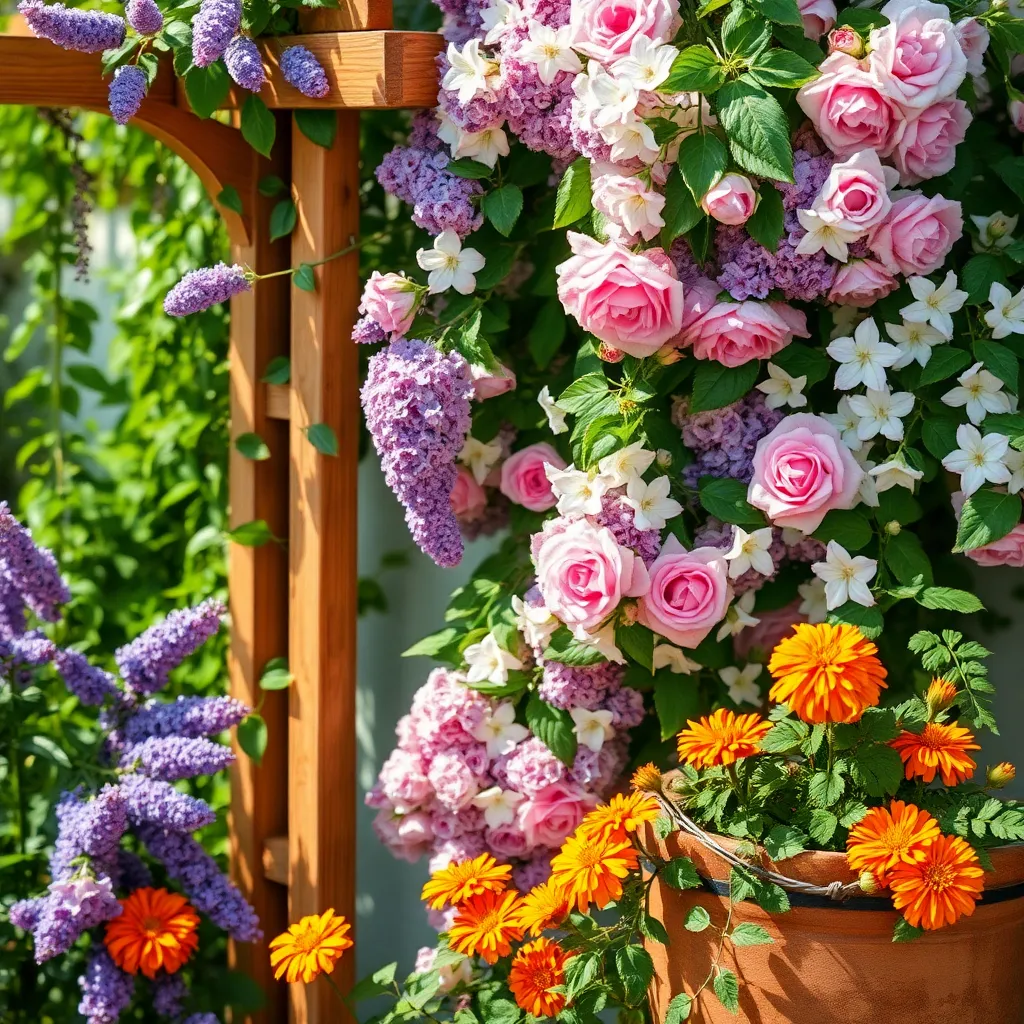
Enhancing your garden’s appeal with fragrant plants can create a truly immersive sensory experience. Consider combining the sweet scent of lavender with the rich aroma of jasmine for a delightful pairing. Lavender thrives in well-drained soil and requires full sun, making it an excellent choice for sunny borders or even container gardens. Jasmine, on the other hand, prefers a bit of afternoon shade and slightly moist soil, so planting it near taller plants or in a partly shaded area will keep it happy.
Another enchanting combination is the pairing of roses and gardenias, both renowned for their heady fragrances. Roses flourish in well-drained, fertile soil with a pH of 6.0 to 6.8, and they benefit from regular pruning to encourage blooms. Gardenias, meanwhile, prefer acidic soil with a pH of 5.0 to 6.0 and require consistent watering to keep the soil evenly moist but not waterlogged. By planting these two together, you create a layered fragrance profile that can captivate anyone who walks by.
For a more exotic scent experience, try planting honeysuckle alongside night-blooming jasmine. Honeysuckle is a climber that loves full sun and can tolerate a variety of soil types, making it a versatile option for trellises or fences. Night-blooming jasmine, true to its name, releases its fragrance in the evening and thrives in well-drained, sandy soil with plenty of sunlight. This combination not only perfumes the air but also adds vertical interest to your garden space.
To maximize the sensory delight of your garden, think about the timing of each plant’s peak fragrance. By selecting plants that release their scents at different times of day, such as morning glories for the morning and night-blooming jasmine for the evening, you ensure a constant aromatic presence. Regularly deadhead spent blooms to encourage new growth and maintain each plant’s health. This thoughtful planning transforms your garden into a living world of ever-changing fragrance, inviting you to enjoy it from dawn to dusk.
Easy-Care Combos for Beginners
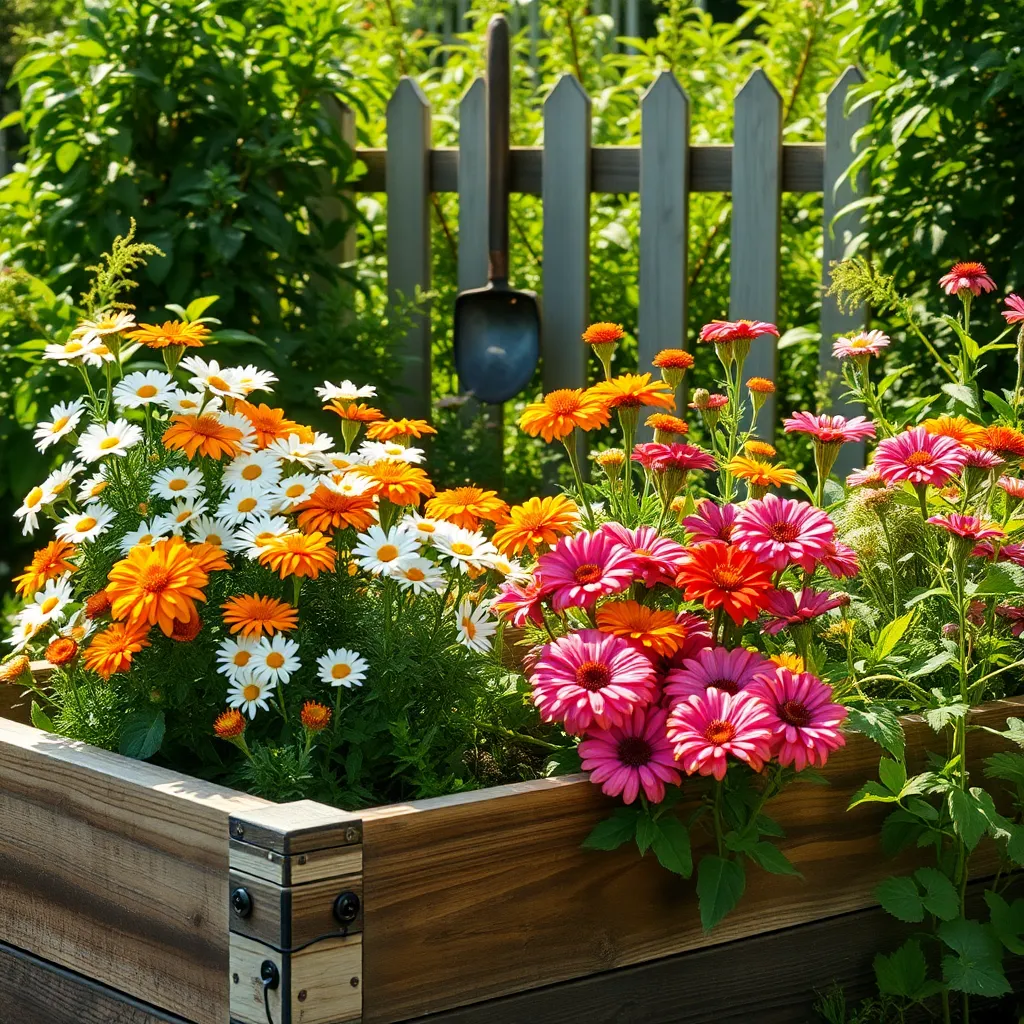
If you’re new to gardening, easy-care combos can provide a great start to your floral journey. Consider pairing marigolds with zinnias, as both thrive in full sun and well-draining soil, making them low-maintenance and vibrant additions to any garden.
Begin by ensuring your chosen location receives at least six hours of sunlight daily. Water these pairs deeply once a week, allowing the soil to dry out between watering to prevent root rot.
For soil preparation, mix in some compost to enhance drainage and fertility. This simple step can significantly boost plant health and flowering, giving you a lush garden with minimal effort.
Advanced tip: deadhead spent blooms to encourage continuous flowering throughout the season. This practice keeps your garden looking fresh and extends the blooming period, allowing you to enjoy your garden’s beauty for longer.
Conclusion: Growing Success with These Plants
In exploring the dazzling array of garden flower combinations, we’ve uncovered five key relationship concepts that mirror the harmonious beauty of nature. First, diversity is strength; just as varied blooms create vibrant gardens, diverse perspectives enrich relationships. Second, balance is crucial; like flowers needing sun and shade, relationships thrive on equilibrium. Third, nurturing is essential; consistent care fosters growth in both plants and partnerships. Fourth, resilience is necessary; just as flowers weather storms, relationships require resilience to endure challenges. Lastly, intentionality matters; purposeful arrangements in the garden reflect the deliberate actions needed to cultivate strong connections.
Now, take a moment to reflect on these concepts and identify one area in your relationship that could benefit from renewed attention. Whether it’s embracing diversity or cultivating balance, commit to one small, actionable step today.
To ensure these insights remain at your fingertips, save or bookmark this article for future reference. By doing so, you’re equipping yourself with the tools to nurture flourishing relationships. Remember, with each intentional step you take, you’re planting the seeds for a future of relationship success, where love and understanding bloom as beautifully as any garden.

